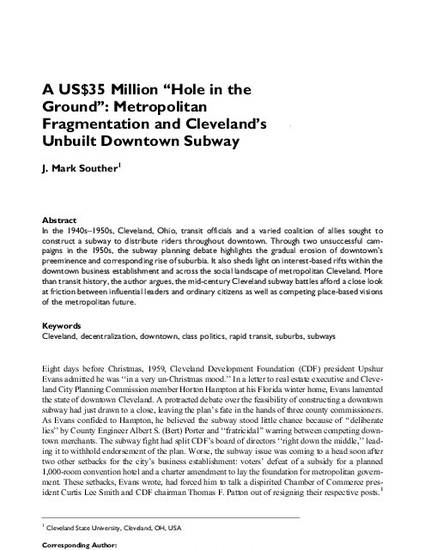
Article
A US$35 Million 'Hole in the Ground': Metropolitan Fragmentation and Cleveland's Unbuilt Downtown Subway
Journal of Planning History
(2015)
Abstract
In the 1940s–1950s, Cleveland, Ohio, transit officials and a varied coalition of allies sought to construct a subway to distribute riders throughout downtown. Through two unsuccessful campaigns in the 1950s, the subway planning debate highlights the gradual erosion of downtown’s preeminence and corresponding rise of suburbia. It also sheds light on interest-based rifts within the downtown business establishment and across the social landscape of metropolitan Cleveland. More than transit history, the author argues, the mid-century Cleveland subway battles afford a close look at friction between influential leaders and ordinary citizens as well as competing place-based visions of the metropolitan future.
Keywords
- Cleveland,
- decentralization,
- downtown,
- class politics,
- rapid transit,
- suburbs,
- subways
Disciplines
Publication Date
August, 2015
DOI
10.1177/1538513214545849
Citation Information
J. Mark Souther. "A US$35 Million 'Hole in the Ground': Metropolitan Fragmentation and Cleveland's Unbuilt Downtown Subway" Journal of Planning History Vol. 14 Iss. 3 (2015) p. 179 - 203 ISSN: 1538-5132 Available at: http://works.bepress.com/j_souther/20/
